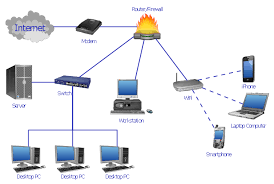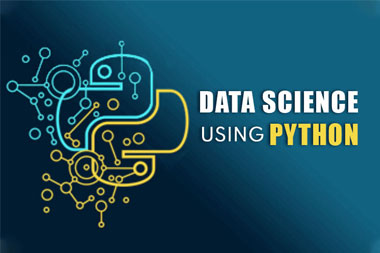1. Introduction to Cybersecurity
- What is Cybersecurity?
- Definition and scope of cybersecurity
- Importance of cybersecurity in the digital age
- Types of cyber threats: Malware, Phishing, Ransomware, etc.
- Cybersecurity Principles
- Confidentiality, Integrity, and Availability (CIA Triad)
- Authentication, Authorization, and Accounting (AAA)
- Risk Management and Cybersecurity Governance
- Cybersecurity Frameworks and Standards
- NIST Cybersecurity Framework
- ISO/IEC 27001
- Common Cybersecurity Frameworks and Regulatory Standards (GDPR, HIPAA, etc.)
2. Understanding Cyber Threats
- Types of Cyber Attacks
- Malware: Viruses, Worms, Trojans, Ransomware, Spyware
- Phishing and Social Engineering
- Denial of Service (DoS) and Distributed Denial of Service (DDoS)
- Insider Threats
- SQL Injection and Cross-Site Scripting (XSS)
- Attack Vectors and Techniques
- Network-based attacks (Man-in-the-Middle, Spoofing, etc.)
- Application-based attacks
- Physical attacks: USB drop attacks, Theft of devices, etc.
- Advanced Persistent Threats (APTs)
- Characteristics of APTs
- How APTs operate and how to defend against them
3. Network Security
- Introduction to Networking Basics
- OSI Model and TCP/IP Model
- Common protocols (HTTP, HTTPS, FTP, SMTP, etc.)
- IP addressing, Subnetting, and Routing
- Firewalls and Network Perimeter Security
- Types of firewalls: Packet-filtering, Stateful, and Proxy Firewalls
- Intrusion Detection and Prevention Systems (IDS/IPS)
- Network Segmentation and VLANs
- VPNs and Secure Communication
- Virtual Private Networks (VPNs): Types and configurations
- Securing communication with SSL/TLS encryption
- Using Public Key Infrastructure (PKI) for secure communications
- Wi-Fi Security
- Wireless security protocols (WPA2, WPA3)
- Securing wireless networks against attacks (WEP cracking, Evil Twin, etc.)
4. Cryptography and Encryption
- Fundamentals of Cryptography
- Symmetric vs. Asymmetric Encryption
- Hashing and Digital Signatures
- Key management: Public and private keys
- Encryption Protocols
- SSL/TLS Encryption for Web Traffic
- IPsec and VPN encryption protocols
- End-to-End Encryption in messaging apps
- Cryptographic Attacks and Mitigations
- Brute force attacks, Rainbow table attacks, and side-channel attacks
- Techniques for protecting against cryptographic vulnerabilities
5. Operating System and Endpoint Security
- Securing Operating Systems
- Windows, Linux, and Mac OS Security Features
- Patching and Updating Systems
- Configuring User Access Control (UAC) and Privilege Management
- Endpoint Security
- Antivirus and Anti-malware tools
- Endpoint Detection and Response (EDR)
- Securing mobile devices: MDM (Mobile Device Management) and BYOD policies
- Hardening Systems and Devices
- Configuring Security Policies and Firewall Rules
- Disabling unused services and ports
- Protecting against zero-day vulnerabilities
6. Web Application Security
- Web Application Vulnerabilities
- SQL Injection, Cross-Site Scripting (XSS), and Cross-Site Request Forgery (CSRF)
- Remote File Inclusion (RFI) and Local File Inclusion (LFI)
- Insecure Direct Object References (IDOR)
- Web Security Best Practices
- Secure coding practices (Input validation, Output encoding)
- Web Application Firewalls (WAF) and Content Security Policies (CSP)
- Authentication and Authorization in Web Apps
- OWASP Top Ten
- Overview of OWASP’s top ten web vulnerabilities
- Mitigation strategies for each vulnerability
7. Identity and Access Management (IAM)
- User Authentication and Authorization
- Multi-Factor Authentication (MFA)
- Single Sign-On (SSO) and Federation
- Role-Based Access Control (RBAC) and Attribute-Based Access Control (ABAC)
- Identity Protection
- Protecting against identity theft and credential stuffing
- Password policies and password managers
- Access Control Models
- Mandatory Access Control (MAC), Discretionary Access Control (DAC), and Role-Based Access Control (RBAC)
8. Security Operations and Incident Response
- Security Monitoring and Logging
- Importance of SIEM (Security Information and Event Management)
- Using Syslog for centralized log collection
- Analyzing logs for suspicious activities and anomalies
- Incident Response Lifecycle
- Phases of Incident Response: Detection, Containment, Eradication, Recovery, and Lessons Learned
- Incident Response Plans (IRP) and Playbooks
- Forensic investigation and evidence preservation
- Threat Hunting and Attack Simulation
- Techniques for proactive threat detection and mitigation
- Red team vs. Blue team exercises
9. Cloud Security
- Introduction to Cloud Computing
- Understanding Cloud Service Models: IaaS, PaaS, SaaS
- Public, Private, and Hybrid Cloud Architectures
- Cloud Security Challenges
- Data breaches and access control issues
- Cloud misconfigurations and shared responsibility model
- Securing APIs in cloud environments
- Cloud Security Best Practices
- Encryption in transit and at rest
- Identity and Access Management in the cloud
- Cloud Security Posture Management (CSPM)
10. Cybersecurity Risk Management
- Risk Assessment and Management
- Identifying and evaluating cyber risks
- Risk mitigation strategies: Risk avoidance, reduction, transfer, and acceptance
- Risk management frameworks and methodologies
- Business Continuity and Disaster Recovery
- Developing and testing Business Continuity Plans (BCP)
- Disaster Recovery Planning (DRP)
- Data Backup and Recovery Strategies
- Compliance and Legal Aspects
- GDPR, HIPAA, and other data protection regulations
- Understanding and implementing compliance controls
- Penalties for non-compliance and importance of audits
11. Ethical Hacking and Penetration Testing
- Introduction to Ethical Hacking
- Understanding the role of ethical hackers and penetration testers
- Legal and ethical considerations in hacking
- Common penetration testing methodologies
- Penetration Testing Tools
- Overview of popular tools: Metasploit, Nmap, Burp Suite, Wireshark
- Scanning and exploitation techniques
- Vulnerability Assessment
- Identifying vulnerabilities through network scanning and web application testing
- Reporting and remediating identified vulnerabilities



